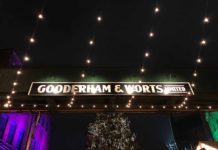Breaking ground at the end of 2012, Environment 3 (EV3) was named the first LEED (Leadership in Energy and Environmental Design) Platinum-certified building in an Ontario campus.
Paul Parker, a faculty member at UW’s Faculty of Environment since 1991 whose research revolves around sustainable buildings said, “LEED is set up as a system to encourage adding environmental and energy features [to] the building. It works as a checklist.” Parker is also cross-appointed between the School of Environment, Enterprise and Development (SEED) and the School of Geography and Environmental Management (GEM).
The LEED certification requirements vary between levels, from the lowest level (Certified) to the highest level (Platinum). These requirements revolve around environmental factors such as sustainable site development, water efficiency, energy efficiency, materials selection, and indoor environmental quality.
Spanning across 57,000 square feet, the EV3 building was built as a bridge instead of a regular extension to refrain from putting any weight on the neighbouring building, Environment 2 (EV2), which was built in 1981.
“We are using our existing footprint rather than using more space, across more green space. And so that way, by going up, we could preserve the green space,” Parker explained. “In fact, we improved the energy performance of [EV2] just by building [EV3], because the old external wall of [EV2] was always losing heat; now it’s an internal wall to the atrium, so it doesn’t lose heat anymore.”
EV3’s two-story living wall quickly became one of the most frequently visited spots on the UW campus, though it gained zero points under the LEED certification system since living walls had already been widely implemented worldwide. However, Parker believes the wall is still an important part of the space.
“It is a symbol,” Parker said. “Why is it important? Because of the thousands of students who are coming through every year. It’s not merely a building; this is a building that thousands of students see and work in, and that becomes their new normal.“
Other sustainable features in EV 3 include solar panels, constructed wetlands and low-flush toilets. The building also has two skylit courtyards as well as daylight sensors on the ceilings that are used to maximize energy efficiency.
Parker noted that the construction of a LEED Platinum-certified building is a reflection of the university’s commitment to a more sustainable campus and future. “The good news is that the university does realize that improving energy efficiency will reduce our costs. Of course, the challenge is to make the investment to make those changes.”
“Looking to the future, I would say that we would want to go beyond LEED, we need to talk about zero carbon buildings,” Parker added. “We have the technology to do so now and we have demonstrated it in the Evolv1 building.”
Evolv1 is one of UW’s newest buildings, located on the North Campus. It was built in 2018 and was named Canada’s first zero-carbon building, generating more energy than it consumes. Evolv1 does not burn any natural gases due to its integrated solar panels and sustainable infrastructure.































